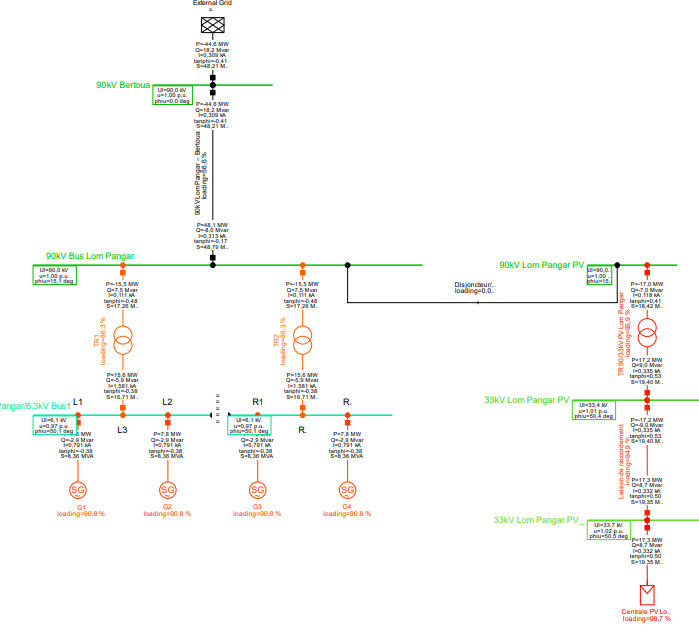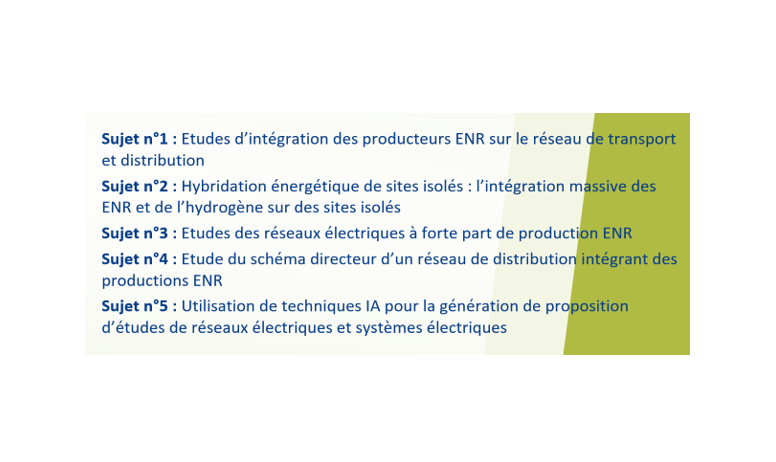In the context of supporting economic growth in African countries, financial institutions such as the World Bank play a key role in the development of renewable energy. Based on electricity demand forecasts established by the Ministry of Energy of the respective country, these institutions propose hybridization projects that integrate renewable energy (RE) into existing power plants. One of the main approaches of these initiatives is the installation of photovoltaic (PV) power plants near existing hydroelectric dams, enabling optimal and joint energy management from both sources.
A project of this nature has been studied for the Lom Pangar (31 MW) and Memve’ele (211 MW) hydroelectric facilities in Cameroon. The objective of this study was to assess the feasibility of installing solar power plants near these infrastructures to maximize renewable energy production.
The project was conducted in partnership with multiple stakeholders to cover various technical and financial aspects:
- Hydroelectric/PV hybridization study
- Solar potential analysis
- Preliminary design of MV/LV electrical installations
- High-voltage (HV) grid connection analysis and impact on the local transmission network
- Environmental and social (E&S) impact assessment
- Economic and financial analysis
CAPSIM’s Contributions
Within this framework, CAPSIM played a key role by providing technical expertise and proposing innovative solutions, including:
- Management strategy assessment: CAPSIM analysed [JS1] different management scenarios, the solar and hydroelectric plants operating in a coupled or independent mode.
- Determination of solar plant capacities: Taking into account land constraints, environmental limitations, and the requirements of the existing power grid, CAPSIM assessed the potential solar capacity that could be installed around the dams.
- Evaluation of transmission line capacity: A thorough analysis of high-voltage (HV) and medium-voltage (MV) transmission lines was conducted to ensure that the new infrastructure could support solar production without overloading the grid.
- Proposal of connection schemes: CAPSIM recommended multiple configurations for connecting the solar plants, depending on whether the project is managed by a public authority or an independent power producer (IPP).
- Preliminary sizing of equipment: The study also included an estimation of transformer requirements and electrical connections necessary to transfer the generated energy, considering power flows and short-circuit currents.
- Cost estimation: CAPSIM’s financial analysis covered grid connection costs, energy losses, and the risks associated with connecting the solar plants to the grid while considering regulatory and physical constraints.
Key Takeaways from the Pre-feasibility Analysis
The pre-feasibility study enabled the proposal of suitable connection solutions that do not impose constraints on existing electrical infrastructure. Thanks to this analysis, concrete recommendations were made to maximize the hybridization potential between hydroelectric and photovoltaic energy in Cameroon.
This project, at the intersection of technology and energy needs, represents a significant step toward energy independence and sustainable development in the country.
[JS1]Analysed (GB) vs analyzed (US)





